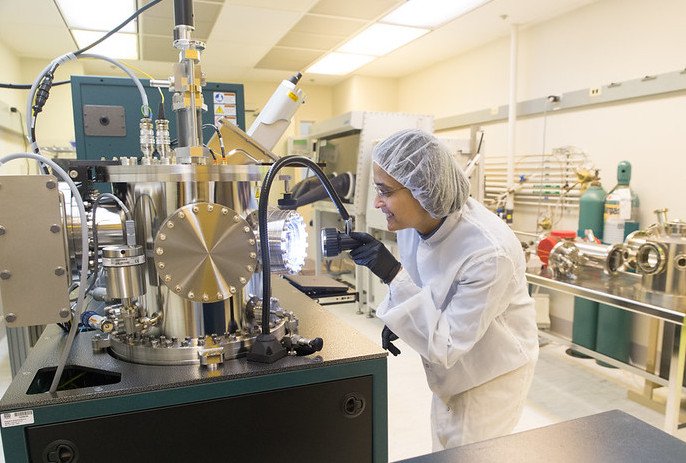OSU to lead federal effort to advance semiconductor technologies in Northwest

CORVALLIS, Ore. (KTVZ) – Oregon State University will spearhead a $1 million National Science Foundation project to advance semiconductor technologies in the Pacific Northwest.
The effort led by Greg Herman, professor of chemical engineering in Oregon State’s College of Engineering, is part of the NSF’s new Regional Innovation Engines program.
Herman said the project is complementary to the Oregon Semiconductor and CHIPS Act and the federal CHIPS and Science Act, both recently enacted to accelerate domestic production of semiconductors and boost regional and local economies.
OSU will work with the University of Washington, Boise State University, the Oregon Business Council, the city of Hillsboro and more than 20 other partners on the two-year NSF Engines project. After those two years, the partners will be eligible for up to $160 million of additional funding over 10 years.
Oregon State is also part of two other NSF Engine projects: One focused on mass timber that’s led by the University of Oregon, OSU’s ongoing partner in the TallWood Design Institute, and another on smart grid technologies under the direction of Portland State University.
Herman said the semiconductor work will include federal, regional and state government bodies, private industry and public learning institutions. Guiding the work, he said, is “a vision to develop a regional innovation ecosystem that expands discovery and entrepreneurship and creates training programs to enable a diverse workforce.”
“This award from the NSF’s Regional Innovation Engine program is a game-changer for Oregon’s and the Pacific Northwest’s semiconductor innovation ecosystem,” said Duncan Wyse, president of the Oregon Business Council. “We are excited to embark on this journey with our collaborators and the NSF.”
Herman notes that the entrepreneurial ecosystem in the Pacific Northwest is already strong and growing, which makes it well positioned for a major push from a historic collaboration.
“To our knowledge this is the first time in our region’s history that major research universities have partnered with industry, government, national laboratories and nonprofits to develop a more cohesive semiconductor technology environment for economic development,” he said.
The goal of the NSF Engines program is to catalyze and foster innovation ecosystems across the United States while advancing critical areas such as semiconductors, artificial intelligence, advanced wireless and biotechnology.
“We will work with our partners to create clearer pathways to semiconductor careers and raise awareness of these opportunities among learners, families and educators,” Herman said. “Education and industry partners will work collaboratively to expand pathways that teach manufacturing, mechanical, computer and engineering skills and smooth out the pathways to community college and university credentials and degrees.”
The NSF says the program is unique in its approach to speeding up and scaling innovation and translation in emerging and critical technologies; addressing societal and economic challenges; engaging a diverse workforce; and building a new model for driving breakthrough, cross-sector research.
“The city of Hillsboro is grateful that the National Science Foundation’s Regional Innovation Engine program has recognized the vision and opportunity presented by our partnerships and strong semiconductor industry presence,” said Dan Dias, Hillsboro’s economic and community development director. “Receiving this award advances our tri-state partnership and positions the region to expand as a national and global hub of semiconductor manufacturing excellence and innovation.”
The official name of the OSU-led NSF Engine is Advancing Semiconductor Technologies in the Northwest (Oregon, Idaho, Washington) and further information can be found at semiconductor.oregonstate.edu.
The other NSF Engines with Oregon State involvement are The Pacific Northwest Smart Grid Technology Ecosystem: Creating prosperity through a smart, sustainable, and secure electric grid, led by Portland State; and Regional Engine for Advancing Mass Timber Technologies, led by the University of Oregon.
Eduardo Cotilla-Sanchez of the College of Engineering is leading OSU’s portion of the smart grid engine, and Andre Barbosa (Engineering) and Iain Macdonald (Forestry) are the Oregon State leaders in the mass timber engine.
About the OSU College of Engineering: The college is a global leader in artificial intelligence, robotics, advanced manufacturing, clean water and energy, materials science, computing, resilient infrastructure and health-related engineering. Among the nation’s largest and most productive engineering programs, the college awards more bachelor’s degrees in computer science than any other institution in the United States. The college ranks second nationally among land grant universities, and third among the nation’s 94 public R1 universities, for percentage of tenured or tenure-track engineering faculty who are women.